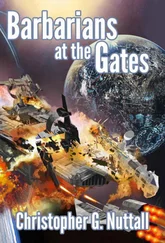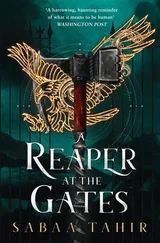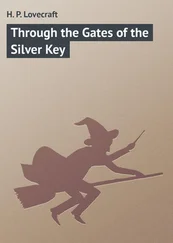That night he went out with medics to pick up the dead and wounded. For hours he called the names of friends he had led into a massacre. Of the 120 men who had gone with him that morning, only thirty returned.
At 60th Motorized Division casualty stations the surgeons worked feverishly to save lives. Almost totally recovered from his broken upper jaw, Dr. Ottmar Kohler had moved his hospital to within a half mile of the front. Stubbornly insisting that all German aid stations treat men within minutes of their being wounded, he had fought the traditions of the German Army. Operating on the victims of the Orlovka battle, Ottmar Kohler knew his radical approach was successful. He was saving men who otherwise would have died, and recently he had been inundated with postcards from convalescent patients back in Germany. All of them thanked him for keeping them alive.
The determined Kohler planned to continue his campaign with the hierarchy until every soldier wounded at Stalingrad got an equal chance to survive.
Despite local setbacks to units like Klotz’s company, the “correction” at Orlovka was successful and the Russian sector quickly collapsed. But General Paulus now faced new troubles, this time within his own ranks, when he became engaged in a feud with the Luftwaffe about how the campaign was being conducted.
Gen. Freiherr von Richthofen, the acerbic, flamboyant commander of the Fourth Air Fleet, had hinted strongly that the city would have fallen long ago were it not for the timidity of the leadership of the ground forces. Paulus resented Richthofen’s insinuations, and on October 3, he and General Seydlitz-Kurzbach met with the Luftwaffe general and Albert Jeschonnek, Goering’s deputy. The Luftwaffe officers lamented the loss of so many men in the streets of Stalingrad. When Paulus said prompt reinforcements would bring success, the air force men seemed sympathetic, and the generals parted on amicable terms.
But later, Richthofen gave Jeschonnek his own interpretation of the problem, “What we lack is some clear thinking and a welldefined primary objective. It’s quite useless to muck about around here, there, and everywhere as we are doing. And it’s doubly futile, with the inadequate forces at our disposal. One thing at a time, and then all will go well—that’s obvious. But we must finish off what we’ve started, especially at Stalingrad….”
Richthofen was now questioning not only Paulus but the Führer himself, who had “mucked about” in several directions and brought on the present crisis in southern Russia.
To get the reinforcements he needed, Paulus sent a flood of cables to Army Group Headquarters about Sixth Army’s forty thousand casualties in six weeks’ time. As a result, Hitler sent him the 29th Motorized Division and the 14th Panzers from Hoth’s Fourth Army south of Stalingrad, plus individual replacements from the Ukraine, and these troops came as green soldiers.
Their first hours in combat were especially dangerous. They had to trust their instincts, to waken their animal senses and be alert to the slightest sound or movement. If they were slow to learn, they were soon dead. In the sector held by the 9th Flak Division, six new men entered the front line one night, and one by one their curiosity led them to look at the Russian positions. By ten the next morning, four of the six had been shot through the head.
Vassili Chuikov had organized an efficient intelligence organization to keep abreast of Paulus’s plans. Reconnaissance teams regularly monitored no-man’s-land, checking changes in German strength. Sometimes, select groups passed through the enemy lines to spy on troop movements in the rear, and to capture prisoners.
On October 9, a four-man commando squad found refuge in an abandoned railroad coal car on a track between Mamaev Hill and the Red October workers’ settlement. The Russians stayed inside the shelter most of the day, reporting back by radio now and then on German activity. They had located dozens of artillery pieces firing on the city from behind the northern slope of Mamaev; they had seen columns of German field guns and mortars moving on rear roads toward a rendezvous on the western outskirts of Stalingrad. Behind the guns came hundreds of trucks, carrying ammunition. The squad sensed a mass movement, a buildup taking place inside Sixth Army’s lines. But they needed a prisoner to confirm their hunch.
After dark, the commandos snipped a telephone cable and waited for the Germans to come and repair it. A flashlight soon appeared and when the German approached the break, the Russians shot him. One of them dressed up in his uniform and stood on the railroad embankment waiting for another German to walk the wire.
Another flashlight soon moved along the track and Pvt. Willi Brandt fell into the ambush. The Russians knocked him out and he revived to find four men standing over him, asking questions, demanding prompt answers. Terrified, Brandt gave his name, rank, and unit. Further, he told his interrogators that the German 24th Panzer Division had just been shifted toward the factories, the 94th Division had arrived from southern Stalingrad, and that Adolf Hitler had ordered the city taken by October 15.
The Russians had their answer. Warning Brandt that he had betrayed military secrets, they led him back to the railroad track and pointed out the road leading to his friends. In the darkness, the trembling Brandt expected a bullet in his back. None came and he kept walking. When he was out of range, he turned and waved, calling: “ Danke, Kamerad! ”
Vassili Chuikov added the commando team’s information to his maps. Now that he knew the full weight of Sixth Army was bearing down on the factories, he ordered local attacks to push the Germans off balance, to delay the inevitable. But the Sixth Army threw the Russians back every time. They were too strong.
The Stukas came at first light on the morning of October 14, and hundreds of the black planes hovered over Stalingrad. Sirens screaming, they dove again and again. Although the day was sunny, a blanket of smoke from bomb bursts cut visibility to a hundred yards.
By 11:30 A.M., after two hundred German tanks had broken through Russian defenses around the tractor works, Gen. Erwin Jaenecke’s 389th Infantry Division burst into the mile-long labyrinth of shops. The works quickly became a charnel house. Millions of shards from the enormous glass skylights in the roofs littered the concrefe floors, and blood smeared the walls. Cannon shells and tracer bullets ricocheted through cafeterias, and Germans and Russians lunged at each other across chairs and tables. The eight thousand commandos of the Soviet 37th Guards Division met the Germans head-on in the factory complex and in the next forty-eight hours, five thousand of them were either killed or wounded. General Zholudev himself was a casualty. Buried in rubble to his neck by a direct hit on his command post, he waited for hours until he was rescued. Later he collapsed in shock at Chuikov’s headquarters when he tried to describe the annihilation of his men.
Chuikov had little time to sympathize. His entire army was in mortal danger. All telephone lines were cut. Scattered units sent runners to the riverbank asking for directions, or whether the Sixty-second Army was still functioning. Chuikov set up an emergency radio to transmit orders across the river and then relay them to isolated forces trapped in the rubble of the factories. Chuikov told each division and regiment to hold fast.
As for himself, the commander of the Sixty-second Army wondered how long he could survive. When he asked permission to send part of his staff to the safe side of the Volga, Yeremenko refused. In the meantime, thirty men around Chuikov’s bunker died from shells and bullets, and his bodyguards spent hours digging victims out of wreckage and bomb holes.
Читать дальше












